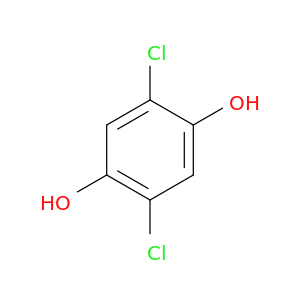
2,5-Dichlorobenzene-1,4-diol
| Title | Journal |
|---|---|
| The whole genome sequence of Sphingobium chlorophenolicum L-1: insights into the evolution of the pentachlorophenol degradation pathway. | Genome biology and evolution 20120101 |
| Metabolism of 2-chloro-4-nitrophenol in a gram negative bacterium, Burkholderia sp. RKJ 800. | PloS one 20120101 |
| Identification of a eukaryotic reductive dechlorinase and characterization of its mechanism of action on its natural substrate. | Chemistry & biology 20111028 |
| The lin genes for γ-hexachlorocyclohexane degradation in Sphingomonas sp. MM-1 proved to be dispersed across multiple plasmids. | Bioscience, biotechnology, and biochemistry 20110101 |
| Aerobic degradation of lindane (gamma-hexachlorocyclohexane) in bacteria and its biochemical and molecular basis. | Applied microbiology and biotechnology 20070901 |
| A novel pathway for the biodegradation of gamma-hexachlorocyclohexane by a Xanthomonas sp. strain ICH12. | Journal of applied microbiology 20070601 |
| Growth inhibition by metabolites of gamma-hexachlorocyclohexane in Sphingobium japonicum UT26. | Bioscience, biotechnology, and biochemistry 20060401 |
| Distribution of gamma-hexachlorocyclohexane-degrading genes on three replicons in Sphingobium japonicum UT26. | FEMS microbiology letters 20060301 |
| Total syntheses of demethylasterriquinone B1, an orally active insulin mimetic, and demethylasterriquinone A1. | The Journal of organic chemistry 20021115 |
| Employment of the human estrogen receptor beta ligand-binding domain and co-activator SRC1 nuclear receptor-binding domain for the construction of a yeast two-hybrid detection system for endocrine disrupters. | Journal of biochemistry 20020301 |
| Cloning and sequencing of a 2,5-dichlorohydroquinone reductive dehalogenase gene whose product is involved in degradation of gamma-hexachlorocyclohexane by Sphingomonas paucimobilis. | Journal of bacteriology 19980301 |
| Sequence analysis of a gene cluster involved in metabolism of 2,4,5-trichlorophenoxyacetic acid by Burkholderia cepacia AC1100. | Applied and environmental microbiology 19950401 |
| Cloning and sequencing of a 2,5-dichloro-2,5-cyclohexadiene-1,4-diol dehydrogenase gene involved in the degradation of gamma-hexachlorocyclohexane in Pseudomonas paucimobilis. | Journal of bacteriology 19940601 |